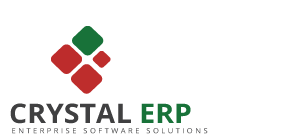Predictions of how technology will change our lives don’t always work out. Science and technology TV shows in the 50s and 60s often suggested that we’d all be driving flying cars by now, but I certainly don’t have mine yet. Similar predictions have also been made about the paperless office for many years now – everything in the workplace will be conducted electronically, with paper consigned firmly to the past. So why is this so desirable and why does it also still feel that we have more paper in business than at any time previously?
Can businesses win the paper wars?
A recent research report ‘Winning the Paper Wars’ by AIIM surveyed 562 individual members of the AIIM community as to how their organisations are managing paper, looking at the potential benefits of pursuing a paper-free work environment, why adoption has been slow, and which processes are the most effective for digitisation. The results showed that 74 per cent of survey respondents have business improvement campaigns underway that would benefit from paper-free processes, but surprisingly only 24 per cent have a specific policy designed to eliminate paper from their business.
Even though companies can reap financial benefits, improve response time to customer requests and increase productivity, most organisations have moved at a slow pace when it comes to adopting electronic workflow technologies. Among the 562 respondents, around half have made just five per cent progress towards updating processes that could be paper-free. Nineteen per cent said they have actually seen an increase in paper flowing through the organisation.
The reasons for this are certainly not because the technology to address it has yet to become available. The advent of Enterprise Content Management (ECM) has meant there are a variety of options for any organisation wanting to reduce workplace paper. ECM is not necessarily focused just on reducing the volume of paper in a business, of course, but used properly it can undoubtedly have an impact on paper on the workplace.
It also isn’t anything to do with a lack of incentive to decrease the paper flow in business. When we asked people about the issues brought about by paper-based processes, the handling issues of paper came to the top – re-keying of data, searching for copies (and failing to find them) and filing. Other issues cited were the problem of storage space, the inability to readily monitor workflow progress, the difficulty of version control, lack of disaster recovery and even the cost of paper itself.
What are the main barriers?
In fact, one of the main reasons that paper is still so widely used at work is because of misunderstandings about legal requirements. When we asked our respondents what were their main concerns about work-flowed, paper-free processes, legal admissibility was the third highest, with the related-issue of physical signatures at the top.
The laws on this matter have been standardised in most jurisdictions for between 10 and 20 years now, so the findings are both surprising and frustrating for those keen to reap the benefits of a paperless working environment. Cost of equipment, inflexible workflows, and ease of mark-up were perhaps more understandable objections, as, of course, is the two-edged one of potentially disruptive business change.
Unsurprisingly, it is the legal department that has the more deeply entrenched opposition to paper-free processes, with more than a quarter of legal respondents admitting they were against it. Finance managers and general admin staff were also resistant, but C-level executives were four times more likely to be in favour of paper-free processes than against.
Starting from the top
If more organisations are to benefit from paper-free processes, then those C-level executives need to make their positive views much more strongly known, as any such initiative must begin at the top. Once the C-suite has given its backing then discussions will be much easier. For example, in any business there may well be long-held assumptions that paper is essential for legal compliance, which can partly be addressed by researching others in the industry, but partly by management lending its weight to the debate.
Highlighting the role that paper-free processes can play in key business improvement initiatives is also important – there are lots of benefits to going paper-free, but people need to know about them and again, that can best come from the top.
From a technical perspective, the auditing of existing processes that utilise scanning and electronic workflows should take place, ensuring that they are taking full advantage of the possibilities of OCR, data capture and integration with core enterprise processes. Reviewing the range of capture systems in use with a view to rationalising around a single, highly-capable system, able to service multiple applications will also pay dividends.
More than anything else, an organisation considering reducing the paper flow through the enterprise must seriously consider how it is going to remain competitive if it clings to its paper-laden processes. It will be a long journey towards a paper-free business, but the benefits are clear, and the businesses that aim to thrive and survive will already be starting that journey, or at the very least thinking about doing so.


Leave a Reply
You must be logged in to post a comment.